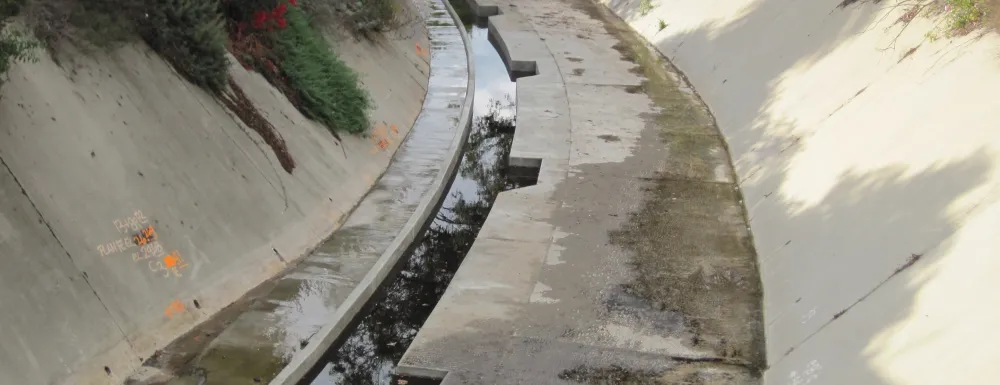
Mission Creek Fish Passage Projects
The endangered Southern California steelhead trout is native to Santa Barbara’s coastal streams, including Mission Creek. Steelhead are born in freshwater streams/rivers, where they typically spend their first year, then migrate to the ocean where they spend most of their adult life. Adult steelhead trout are anadromous, meaning they migrate up freshwater streams and rivers to spawn.
Mission Creek is considered the most viable stream for steelhead trout restoration within the City of Santa Barbara and has a documented historic run of steelhead trout. Mission Creek has an existing population of rainbow trout, and contains high quality spawning and rearing habitat within the stream channels in the mid- and upper-watershed.
Although steelhead trout have been frequently spotted in Mission Creek, they are unable to migrate upstream and spawn due to barriers within the creek channel. The Creeks Division’s efforts to remove barriers to fish passage on Mission Creek have included projects in the Caltrans Channels and at Oak Park, improving access for steelhead trout to 2.5 miles of creek channel.
Tallant Road Bridge at Oak Park
The Tallant Road Bridge is located at the upstream end of Oak Park. Prior to project construction in 2010, a large concrete grade control structure extended approximately 80 feet downstream of the bridge to protect an existing sewer line within the creek channel.
The fish passage project at Tallant Road Bridge replaced the grade control structure with a series of large rock structures made to simulate natural features and create riffles and pools within the creek. The project also relocated the sewer line to protect the creek from potential sewage spills. A low flow channel constructed under the bridge concentrates water into a channel with increased water depth and lower velocity to allow steelhead to swim upstream.
This project was funded in part by the National Oceanic and Atmospheric Administration, Open Rivers Initiative, and the California Department of Fish and Wildlife Fisheries Restoration Grant Program.
Caltrans Channels
The two concrete lined flood control channels on Mission Creek known as the “Caltrans Channels,” constructed in 1934 and 1961, were major barriers to steelhead migration. Prior to the project, during runoff events, the water flow in the channels was too fast and too shallow for fish to swim upstream.
The fish passage design developed for the Caltrans Channels included the construction of a low flow channel with resting areas ("side pockets") at 40-foot intervals to allow fish to swim upstream during and/or following rain events. Construction on the Upper Caltrans Channel (approximately 0.3 miles from Los Olivos Street to Pedregosa Street) was completed in 2012, and the Lower Caltrans Channel (approximately 0.8 miles from Arrellaga Street to Canon Perdido Street) was completed in 2013.
These projects were funded in part by the California Department of Fish and Wildlife, Wildlife Conservation Board, Coastal Conservancy, Annenberg Foundation through the Environmental Defense Center, and the Santa Barbara Foundation.
